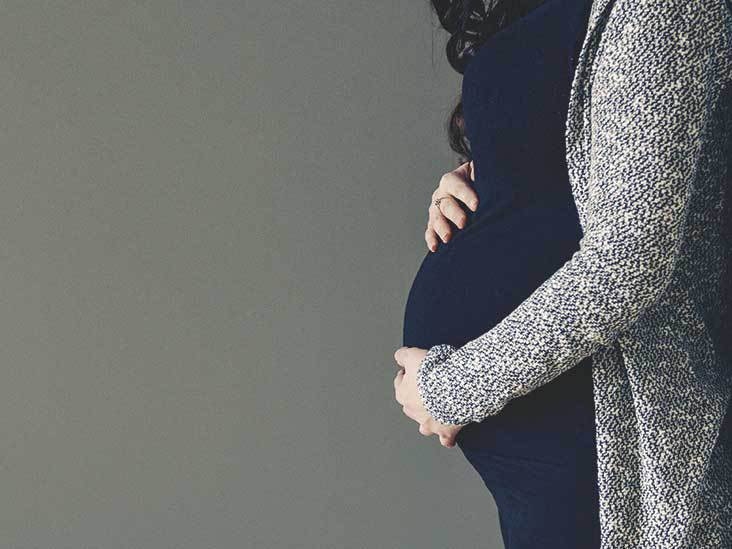Abortion Methods: Dilation & Evacuation (D&E Abortion)
By AnneMarie with Why Pro-Life?
January 3, 2019
What is a Dilation and Evacuation Abortion?
Dilation and Evacuation is the most common type of surgical abortion during the second trimester in the United States. (1) A dilation and evacuation abortion implies two parts. The cervix must first be “prepared”, meaning dilated wide enough for the fetal parts to fit through. The second part is to dismember and remove or “evacuate” the fetus piece by piece.
History of D&E Abortion
Dilation and evacuation abortions were first performed in the United States in the 1970s. Dr. David Grimes, a late-term (including the second half of the second trimester and into the third trimester) abortion doctor published a research study on D&Es in 1977. (2) The biggest challenge in performing D&Es has always been getting the cervix to dilate, since its natural tendency at that point in the pregnancy is to remain closed. Japanese and European abortion doctors first developed a way to dilate the cervix gradually over several days with sterilized seaweed, called laminaria. Later on, synthetic dilators such as Dilapan and Lamicel allowed for even more dilation. Once greater dilation could be achieved, larger instruments could be used to reach through the cervix into the uterus to remove fetal body parts. Dr Warren Hern, another currently-practicing abortion doctor, developed instruments to rotate fetal body parts before removing them from the uterus. (3)
What percentage of Abortions are D&E Abortions?
The Centers for Disease Control (CDC) collect abortion data each year, and the results of their data collection are available online through the year 2014. (4) Abortion data since 2014 have not yet been published. States and several large cities like Washington D.C. and New York City have the option to report their data to the CDC each year or not. For 2014, California, Maryland, and New Hampshire abortion numbers were not reported. In the CDC report, abortion methods are classified as surgical or medical (medication). They report 652,639 abortions total, and almost 47,000 abortions in the second trimester.(5)
The second trimester typically refers to between 12 and 26 weeks after the last menstrual period. Some estimates say that up to 96% of abortions between 14 and 20 weeks along are D&Es. This statistic may not be accurate, though, because it comes from Centers for Disease Control and Prevention (CDC) data that also include other abortion methods. (6)
What happens during a D&E Abortion?
Cervical Preparation
“Cervical preparation” is recommended for all pregnancies over 12-14 weeks to reduce the risk of complications. (7) Dilating the cervix adequately is especially important for four groups of women. These include: teenagers, women with abnormal cervical anatomy, women who have had medical procedures done to their cervix before such as a colposcopy or cervical biopsy or LEEP (loop electrosurgical excision procedure), and women past 20 weeks gestation. (8) All of these groups have a higher likelihood of injury to the cervix and perforation or puncture of the uterus.
Different combinations of medicines and sometimes sterilized seaweed called laminaria or long, thin, synthetic rods called Dilapan-S or medicated sponges called Lamicel may be used to dilate or open the cervix so that the abortion tools and fetal body parts can fit through. (9) The sponges and laminaria swell to absorb the amniotic fluid, forcing the cervix open. The medications chemically cause contractions and cervical softening and opening. One combination of medicines includes the same two medications, Misoprostol and Mifepristone, which are used for medical abortion in the first trimester.
Dilation of the cervix varies from one abortion doctor to another. Some of them start the process two days before the abortion, some the day before the abortion, and some just four hours before the abortion is performed. (10) Often, antibiotics will be given when the laminaria or other synthetic materials are placed to prevent infection. (11) More laminaria or Dilapan-S or Lamicel may be added to the cervix every few hours, or what’s currently in place may be removed and new materials may be placed.
Procedure Day
The day of the abortion, a brief history and physical are performed, blood samples are taken to check for sexually transmitted infections, an antibiotic pill will be given, and an ultrasound will be done. After the cervix has been dilated, the dismemberment and removal process only takes about 30 minutes. (12) The woman may be given pain medication such as Ibuprofen, anti-anxiety medication such as Valium, and some type of local anesthesia shot or shots to numb the cervix. Sometimes intravenous (IV) sedation medicine or general anesthesia are given since D&E is associated with significant pain, but general anesthesia also has higher complication rates than local anesthesia.
Dilation & Extraction
Once the pain and anxiety medications are given, the abortion doctor inserts a speculum, the same cold, metal gripping tool used during Pap smears in OB/GYN offices. The speculum may be weighted if the woman is past 16 weeks along. The speculum widens the vagina and makes the cervix more visible so that the abortion doctor can see what he or she is doing. A tenaculum is a gripping instrument with long handles and a clamp at the end that moves the cervix closer to the vaginal opening. Tenaculum may have sharp metal teeth to help hold the cervix in place. Ultrasound is often used to guide the abortion doctor. Dilators such as Dilapan-S or Lamicel or laminaria are removed. (13)
If the woman is less than 16 weeks along, the abortion doctor may be able to suction out the fetal parts like in a vacuum abortion. Once the fetus is older than 16 weeks, though, forceps are required. Forceps are grasping instruments used to grasp, crush, twist, and pull fetal body parts such as arms and legs or pieces of arms and leg out. The fetal head and spinal column often have to be crushed before they can be removed, especially the farther along the woman is. After the body parts are removed, the placenta is suctioned or scraped out, usually with the abortion doctor placing his hand on the woman’s stomach to help feel for it in the uterus.
After this, the abortion doctor or other staff have to reassemble all of the body parts to make sure that no fetal bone or other tissue remains.
At what point does the fetus die during the Abortion?
The World Health Organization suggests inducing fetal demise, making sure that the fetus is dead before the abortion, for women 20 weeks or more pregnant. This is because the fetus is easier to dismember if it is not moving. The two medications used together for first trimester medication abortion do not technically cause fetal death. In those abortions, the fetus typically dies during the violent contractions they cause. Similarly, and because the fetus is bigger, when one or both of those medicines are used to dilate the cervix before a second trimester abortion like a D&E, they are not expected to cause fetal death.
Fetal death is typically achieved through injection of a medication such as Potassium Chloride or Digoxin into the amniotic sac that holds the fetus. Potassium Chloride is very effective but requires a highly skilled doctor because accidentally injecting it into the mother’s bloodstream could kill her instead of the fetus. Potassium Chloride kills the fetus almost immediately, and the abortion doctor uses ultrasound to watch for the heart to stop beating. Digoxin, on the other hand, takes more time to stop the fetal heartbeat, but is safer for the woman, especially in cases of accidental injection into her bloodstream. It is less effective than Potassium Chloride in killing the fetus, and because it takes longer to act is often given one day before the abortion. This means an additional office visit for the woman seeking an abortion.
When fetal death is not induced before the D&E, the fetus dies when the abortion doctor crushes its skull with large forceps.
What are the Side Effects or Complications of a D&E Abortion?
Expected side effects include:
- Pain, may be severe, especially if general anesthesia is not used (14)
- Cramping
- Bleeding
Serious complications include:
- Cervical injury
- Uterine perforation
- Infection
- Life-threatening hemorrhage (bleeding)
- Uterine rupture
- Incomplete abortion due to body parts or placenta or other tissue left inside the uterus
- Disseminated intravascular coagulopathy (life-threatening blood clotting and bleeding)
- Anesthesia-complications such as respiratory depression (15)
Both cervical injury and uterine perforation can lead to life-threatening hemorrhage or bleeding. (16) A weakened or damaged cervix may lead to preterm labor or preterm premature rupture of membranes (bag of waters breaking) in future pregnancies. Either one of these conditions can end in miscarriage or in the baby being born before 37 weeks and having brain, lung, heart, and other problems. (17)
How often do Complications occur?
While only about 10–15% of all abortions are done in the second trimester, they are responsible for roughly two-thirds or 66% of all major complications. (18)(19) Risk of death from second trimester abortion is over 20 times higher than from first trimester abortion. (20) Risk of death from abortion increases by 38% each week starting in the second trimester. (21) Generally, serious complications occur in about 1 in every 100 women who undergoes D&E abortion. (22) (23) (24)
(3) Cassing Hammond MD, and Stephen Chasen MD, “Dilation and Evacuation,” Management of Unintended and Abnormal Pregnancy. Ed. Paul, Lichtenberg, Borgatta, Grimes, Stubblefield and Creinin. (Wiley-Blackwell, 2009), 158.
(6) Jatlaoui, T. C., A. Ewing, M. G. Mandel, K. B. Simmons, D. B. Suchdev, D. J. Jamieson, and K. Pazol. 2016. Abortion surveillance—United States, 2013. MMWR Surveillance Summaries 65(12):1–44.
(11) Cassing Hammond MD, and Stephen Chasen MD, “Dilation and Evacuation,” Management of Unintended and Abnormal Pregnancy. Ed. Paul, Lichtenberg, Borgatta, Grimes, Stubblefield and Creinin. (Wiley-Blackwell, 2009), 171.
(13) Cassing Hammond MD, and Stephen Chasen MD, “Dilation and Evacuation,” Management of Unintended and Abnormal Pregnancy. Ed. Paul, Lichtenberg, Borgatta, Grimes, Stubblefield and Creinin. (Wiley-Blackwell, 2009), 172.
(19) Cassing Hammond MD, and Stephen Chasen MD, “Dilation and Evacuation,” Management of Unintended and Abnormal Pregnancy. Ed. Paul, Lichtenberg, Borgatta, Grimes, Stubblefield and Creinin. (Wiley-Blackwell, 2009), 179
(22) Grimes DA et al: Mifepristone and misoprostol versus dilation and evacuation for midtrimester abortion: a pilot randomised controlled trial. BJOG 2004 Feb;111(2):148-53;
(23) Kelly T et al: Comparing medical versus surgical termination of pregnancy at 13-20 weeks of gestation: a randomized controlled trial. BJOG 2010 Nov;117(12):1512-20
(24) Turok DK et al: Second trimester termination of pregnancy: a review by site and procedure type. Contraception 2008 Mar;77(3):155-61
[/read]







